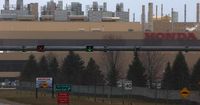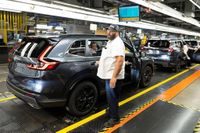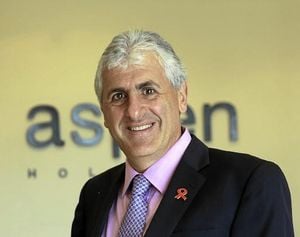Honda Canada has firmly refuted a recent report suggesting that it plans to shift some of its vehicle production from its facility in Alliston, Ontario, to the United States. This statement comes in response to a mid-April article from the Japanese newspaper Nikkei, which claimed that Honda aims to increase its U.S. production by 30% while potentially reducing output in Canada and Mexico.
The Nikkei report, which garnered significant media attention, indicated that Honda was considering moving enough production of its popular CR-V and Civic models to the U.S. to meet 90% of its U.S. sales with vehicles manufactured domestically. However, Honda has not confirmed these claims, and both Canadian officials and Honda Canada have denied any plans for changes to production.
On April 15, 2025, Honda Canada’s Corporate Communications Director, Ken Chiu, stated, "We can confirm that our Canadian manufacturing facility in Alliston, Ontario, will operate at full capacity for the foreseeable future and no changes are being considered at this time." This assertion was echoed by Canada’s federal Industry Minister, Anita Anand, who took to social media to clarify that Honda had communicated to her that no production decisions affecting Canadian operations were being made.
Ontario Premier Doug Ford also weighed in, labeling the Nikkei report as inaccurate. He indicated that Honda Canada had informed his office that while there is an interest in increasing production in the U.S., it would not come at the expense of Canadian operations. Ford emphasized, "I’ll do everything I can to protect the people and their jobs," reinforcing the province's commitment to maintaining Honda’s operations in Ontario.
Currently, approximately 70% of the Honda CR-V and Civic sold in the U.S. are produced domestically, with the rest supplemented by vehicles manufactured in Alliston. The Nikkei report suggested that Honda’s goal was to increase this figure to 90% in response to U.S. President Donald Trump’s recent tariffs on imported vehicles, which impose a 25% levy on non-U.S. content of cars made in Canada and Mexico.
In light of these tariffs, Honda has been closely monitoring its production strategies. Chiu noted, "We constantly study options for future contingency planning and utilize short-term production shift strategies when required to mitigate negative impacts on our business." Despite the challenges posed by the new tariffs, Honda’s Canadian facility continues to operate at full capacity, producing around 375,000 vehicles annually, employing about 4,200 workers.
The Canadian market has shown resilience, with Honda reporting a 9% increase in domestic sales in the first quarter of 2025. This growth has been driven by the Canadian-built Honda Civic, which was the top-selling passenger car in Canada in 2024, and the Honda CR-V, recognized as the best-selling hybrid vehicle in the country.
In contrast to Honda’s stable position, other automakers have faced difficulties due to the tariffs. Stellantis NV, for instance, has temporarily paused production of its minivans and Dodge Chargers, while General Motors announced that its Chevrolet BrightDrop electric parcel van plant in Ingersoll would close for several months, resulting in a reduction of 500 workers.
Ford and Anand’s reassurances come at a crucial time as the Canadian government has announced new support measures for businesses affected by U.S. tariffs. These initiatives are aimed at encouraging automakers to continue their production in Canada, safeguarding jobs and economic stability in the region.
Looking ahead, Honda has made a significant $15 billion investment in its Canadian operations to facilitate the production of electric vehicles by 2024. This move aligns with the global shift towards electric mobility and positions Honda to remain competitive in the evolving automotive landscape.
As Honda navigates the complexities of the current market, the company remains committed to its Canadian workforce and operations. The U.S. market, accounting for nearly 40% of Honda’s global sales, remains vital, with the automaker having sold approximately 1.4 million vehicles, including its Acura lineup, in the U.S. last year. Of those sales, about 40% were imports from Canada or Mexico.
In summary, while Honda is exploring ways to enhance its production capabilities in the U.S. to meet growing demand, it has firmly stated that its Canadian operations will continue unimpeded. The company’s focus on maintaining full capacity in Alliston reflects its commitment to the Canadian market and its skilled workforce, ensuring that Honda remains a significant player in the North American automotive industry.







